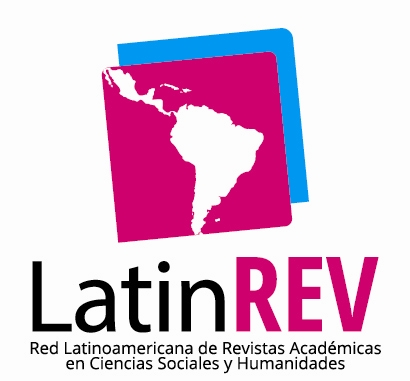No me dejes en visto: uso de dispositivos móviles en la enseñanza del inglés
DOI:
https://doi.org/10.35622/j.rr.2020.02.004Palabras clave:
Aprendizaje móvil, TIC, didáctica, metodología, enseñanza del inglésResumen
Este estudio de caso cualitativo y descriptivo tiene como objetivo analizar el efecto de la implementación de estrategias de aprendizaje móvil para desarrollar habilidades comunicativas en estudiantes de inglés de la Universidad Santo Tomás. Para lograrlo, se definieron tres momentos: el primero fue caracterizar algunas herramientas de aprendizaje móvil como aplicaciones de software enfocadas al desarrollo de habilidades en una lengua extranjera con el fin de identificar sus aportes al proceso de enseñanza. El segundo momento fue implementar una estrategia de aprendizaje móvil para verificar tanto el uso de las TIC como el efecto en el proceso académico. El último momento llevó al análisis de información para determinar los hallazgos y la comunicación de conclusiones. Esta investigación contó con el apoyo de 258 estudiantes, cuyo nivel de inglés osciló entre A1 y B1 según el MCER. Los resultados mostraron que los estudiantes se sintieron motivados para aprender y tuvieron un mejor desempeño con la mediación de estrategias y herramientas de aprendizaje móvil. Esta investigación contribuyó a la consolidación de una propuesta TIC para el Instituto de Idiomas de la Universidad.
Referencias
Ander Egg, E., (2000) El proceso de Globalización en la Cultura. Cuadernos Patrimonio Turístico y Cultural, N. 13, pp. 144-164.
Ahmad, K., Armarego, J. and Sudweeks, F. (2013). Literature review on the feasibility of mobile-assisted language learning (MALL) in developing vocabulary skills among non-English speaking migrant and refugee women. International Conference on Research and Innovation in Information Systems, ICRIIS. pp. 336-341. doi: 10.1109/ICRIIS.2013.6716732
Ally, M. & Prieto-Blázquez, J. (2014). What is the future of mobile learning in education? Mobile Learning Applications in Higher Education [Special Section]. Revista de Universidad y Sociedad del Conocimiento (RUSC). Vol. 11, No 1. pp. 142-151. doi http://dx.doi.org/10.7238/rusc.v11i1.2033.
Botia, A. (2002). Case of study as biography-narrative report. Revista Arbor, ciencia, pensamiento y cultura. Vol. 171, Issue 675, pp. 559-578. Recuperado de: http://arbor.revistas.csic.es/index.php/arbor/article/viewFile/1046/1053
Chen, C. M. & S.-H. Hsu. (2008). “Personalized Intelligent Mobile Learning System for Supporting Effective English Learning”. Educational Technology & Society, 11 (3), pp. 153-180.
Claro, M., CEPAL. (2010). La Incorporación de Tecnologías Digitales en Educación. Modelos de Identificación de Buenas Prácticas. Santiago de Chile, Chile: Naciones Unidas.
Del Campo Cañizares, E. (2014). M-Learning y aprendizaje informal en la educación superior mediante dispositivos móviles. Revista Historia Y Comunicación Social, 18, pp. 231-242. https://doi.org/10.5209/rev_HICS.2013.v18.44239
EF.COM.CO (2018). Inicio - EF EPI. English Proficiency Index. [en línea] Disponible en: https://www.ef.com.co/epi/downloads/
Elaish M., Shuib L., Abdul Ghani A., Yadegaridehkordi E. and Alaa M. (2017). Mobile Learning for English Language Acquisition: Taxonomy, Challenges, and Recommendations. IEEE Access, vol. 5, pp. 19033-19047, doi: 10.1109/ACCESS.2017.2749541
Flétscher, L., Morales, A. (2007) Modelo de desarrollo de servicios m-learning, una propuesta desde la concepción del servicio hacia la pedagogía. Revista Virtual Universidad Católica del Norte. Núm.22. 2007 pp. 1-22
Gardner, H., & Davis, K. (2014). La generación APP. Cómo los jóvenes gestionan su identidad, su privacidad y su imaginación en el mundo digital. Bogotá: Planeta.
Gómez, C. V., & Marta-Lazo, C. (2015). Modelo De Integración Educomunicativa de “Apps” Móviles Para la Enseñanza Y Aprendizaje. Pixel-Bit, Revista de Medios y Educación, (46), 137–153. https://doi-org.crai-ustadigital.usantotomas.edu.co/10.12795/pixelbit.2015.i46.09
Godwin-Jones, R. (2011). Emerging technologies: Mobile apps for language learning. Language Learning and Technology, 15(2). pp. 2-11 http://dx.doi.org/10125/44244
Godwin-Jones, R. (2018). Using mobile devices in the language classroom: Part of the Cambridge Papers in ELT series. Cambridge University Press
Hernández, G. (1997). Caracterización del Modelo Cognitivo. México: ILCE - OEA. Ley 115 (1994). Por la cual se expide la ley general de educación, en http://www.mineducacion.gov.co/1621/articles- 85906_archivo_pdf.pdf
Hernández. S. (2014). Metodología de la investigación. Sexta edición. México: McGraw-Hill Interamericana.
Huang, C. and P. Sun. (2010) “Using mobile technologies to support mobile multimedia English listening exercises in daily life”. In: The International Conference on Computer and Network Technologies in Education (CNTE 2010), At: http://cnte2010.cs.nhcue.edu.tw/
Ibañez, A. y Traxler J. (2016). MALL-Based MOOCs for Language Teachers: Challenges and opportunities. Porta Linguarum. Revista Internacional de Didáctica de las Lenguas Extranjeras. Monográfico I. 2016. 73-85
Klopfer, E., Squire, K., & Jenkins, H. (2002). Environmental detectives PDAs as a Window into a virtual simulated world. IEEE International Workshop on Wireless and Mobile Technologies in Education, 95-98. https://doi:10.1109/WMTE.2002.1039227
Lozano, R. (2011) De las TIC a las TAC: tecnologías del aprendizaje y del conocimiento. Anuario ThinkEPI, 2011, v. 5, pp. 45-47. Recuperado de: https://recyt.fecyt.es//index.php/ThinkEPI/article/view/30465
MEN, (2009) Organización del Sistema Educativo, [en línea] Disponible en: https://www.mineducacion.gov.co/1759/articles- 205294_archivo_pdf.pdf
MEN, (2018). Inicio - Ministerio de Educación Nacional de Colombia. [en línea] Disponible en: http://www.mineducacion.gov.co/1621/article-107522.html
MEN. (2016). La Innovación Educativa en Colombia –Buenas Prácticas para la Innovación y las TIC en Educación. Bogotá, Colombia. Recuperado de https://aprende.colombiaaprende.edu.co/ckfinder/userfiles/files/Libro%20Innovacion%20MEN%20-%20V2.pdf
Puchmüller, A. y Puebla, M. (2014). TIC en Educación Superior: usos e implicancias en dos carreras de instituciones argentinas. Revista Encuentros, 12(2). doi: 10.15665/re.v12i2.266
Rezaei A., Neo, M. and Pesaranghader A. (2013) Effectiveness of using English vocabulary mobile applications on ESL's Learning performance. Proceedings - 2013. International Conference on Informatics and Creative Multimedia. 2013, pp. 114-118.
Rodríguez, L., Vallejo G., Proaño, F., Romero, H., Solís, L., y Erazo, J. (2017). Diseño de una metodología m-learning para el aprendizaje del idioma inglés. Revista Boletín Redipe, 6(6), 35 - 48. Recuperado a partir de https://revista.redipe.org/index.php/1/article/view/241
Rosell-Aguilar, F. (2017). State of the app: A taxonomy and framework for evaluating language learning mobile applications. CALICO Journal 34(2) pp. 243-258. https://doi.org/10.1558/cj.27623
Salguero Cubides, J., (2011) Globalización. Economía y regiones de Colombia. Sociedad geográfica de Colombia.
Seiz Ortiz, Rafael. (2015) Aprendizaje móvil de lenguas basado en criterios pedagógicos. @tic. revista d’innovació educativa Universidad de Valencia. Disponible en http://www.redalyc.org/articulo.oa?id=349543461011
Taylor, S. y Bogdan, R. (1986). Introducción a los métodos cualitativos de investigación. Buenos Aires, Argentina: PAIDOS
Torrente, P. (2012) E-Learning para la enseñanza de lenguas extranjeras: factores de éxitos y desafíos., Revista Teckne, 10 (2) Págs. 54-58.
UNESCO (2013). Directrices para las políticas de aprendizaje móvil. París, UNESCO. Recuperado de https://unesdoc.unesco.org/ark:/48223/pf0000219662
Universidad Santo Tomás. (2015). Documento Marco Lenguas Extranjeras. Bogotá, Colombia: Ediciones USTA.
Universidad Santo Tomás (2015). Lineamientos para el diseño y la actualización curricular. Bogotá: Ediciones USTA.
Universidad Santo Tomás. (2016). Plan Integral Multicampus. Bogotá, Colombia: Ediciones USTA.
Descargas
Publicado
Número
Sección
Licencia
Derechos de autor 2020 Katherin Johanna Rodríguez-Silva, Herberth Alfonso Mendieta-Ramírez

Esta obra está bajo una licencia internacional Creative Commons Atribución 4.0.




















